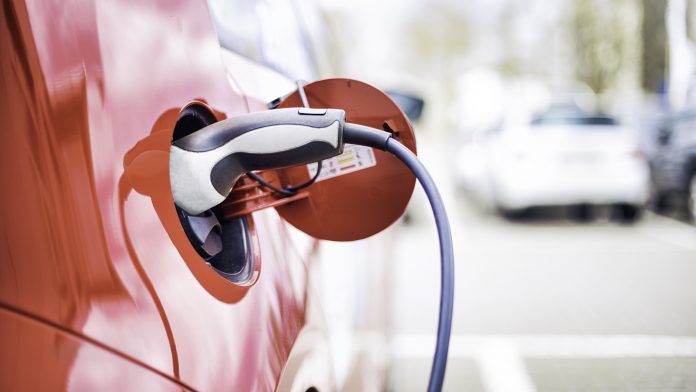A novel mobile charging robot developed by Graz University of Technology, ALVERI and ARTI Robots, independently seeks out parked electric vehicles and supplies them with energy. This development aims to promote the widespread use of e-mobility.
In theory, for the unique technology to work, the electric vehicle (EV) signals that it requires charging, and the mobile charging robot travels to the EV to supply it with energy, all autonomously and without the need for human intervention. With this technology, current difficulties such as the search for a charging station and worrying about the vehicle’s remaining range would no longer be an issue.
The prototype for this technology being developed by TU Graz and ALVERI and ARTI Robots has not yet reached this advanced level, but the first demonstration comes close to this vision.
Accessible charging to boost EV use
In the design of the mobile charging robot, two components are combined into one unit: a mobile platform capable of independent movement – that can travel towards the vehicle at up to 20 km/h – and an automated robot arm that plugs the charging cable into an EV. The robot arm mounted on the torso leads the charging cable to the charging flap and docks there. After the speedy charge, the robot unplugs itself and travels away from the EV.
“The process of refuelling or charging a vehicle is not a major challenge for humans. But for an automated system, on the other hand, it is a very complex, millimetre-precise matter,” explained Bernhard Walzel from the Institute of Automotive Engineering at Graz TU Graz.
Walzel and his institute colleague, Helmut Brunner, had previously drawn attention in 2018 with a stationary charging robot. Now, the engineers have partnered once again with the companies ALVERI and ARTI Robots to develop an independent and mobile version of the technology.
Different robots for defined areas
The aim of the Austrian start-up ALVERI, which is committed to sustainable mobility services and has launched and financed this specific project, entails the series production of e-charging robots. Ehsan Zadmard, CEO of ALVERI, commented: “With the ALVERI CHARbO charging robot, we have not only shown what can sensibly be done with existing know-how in Austria, but have also given the starting signal for more cooperation around infrastructure, mobility services, vehicle concepts and much more in this country. Only in this way will we be in a position to help shape the future of mobility in Europe, and worldwide, and Austria can make a significant contribution here.”
At this time, there is still a way to go before the robot is ready for series production. Currently, the robot relies on connection to a power cable; weight and cost issues need to be worked out; and sustainability issues need to be addressed.
The partners are contemplating the concept of a power supply via ground contacts. At present, it still runs on a separate PC, so software for regulating the robot will also be incorporated. There is also potential for savings with the robotic arm, explained Helmut Brunner: “There is currently no robotic arm on the market for this application specifically. We, therefore, used a conventional collaborative industrial robot arm, which allows movement capabilities in a very large radius. However, we don’t need that much freedom of movement for the charging process. So there is still potential here for less weight and lower costs. The use of such a system only really pays off when a single robot is responsible for several cars and covers a defined area in a parking garage, for example.”
In the future, with the application of this technology, there could be parking areas allocated to electric vehicles, in which mobile charging robots could travel around supplying energy to the parked vehicle. Of course, safety issues must be taken into account and a safety system would need to be developed.
Konstantin Mautner-Lassnig from ARTI Robots explained: “Several safety mechanisms have been implemented in the whole charging robot. The mobile platform uses laser scanners to permanently scan the surroundings for possible obstacles and detects when an object gets too close. Then the platform immediately stops moving.”
Communication between charging infrastructure and vehicle
Walzel added: “There has been an incredible amount of movement in recent years in the development of e-vehicles, the necessary infrastructure, charging options and automated systems. It is now important that the individual systems also communicate with each other. At the moment, we still have to signal to the robot which car it should charge by opening the charging flap. The goal must be for the vehicle to signal its need for charging to the robot independently. Or that the driver activates a robot via an app. A lot will happen in the near future.”
Christa Zengerer, managing director of ACstyria, concluded: “The concept of ALVERI and TU Graz is an important impulse in several future fields of mobility. Initiatives in the areas of digitalisation, autonomous systems and also innovative drive concepts are important to further expanding our pioneering role.”









